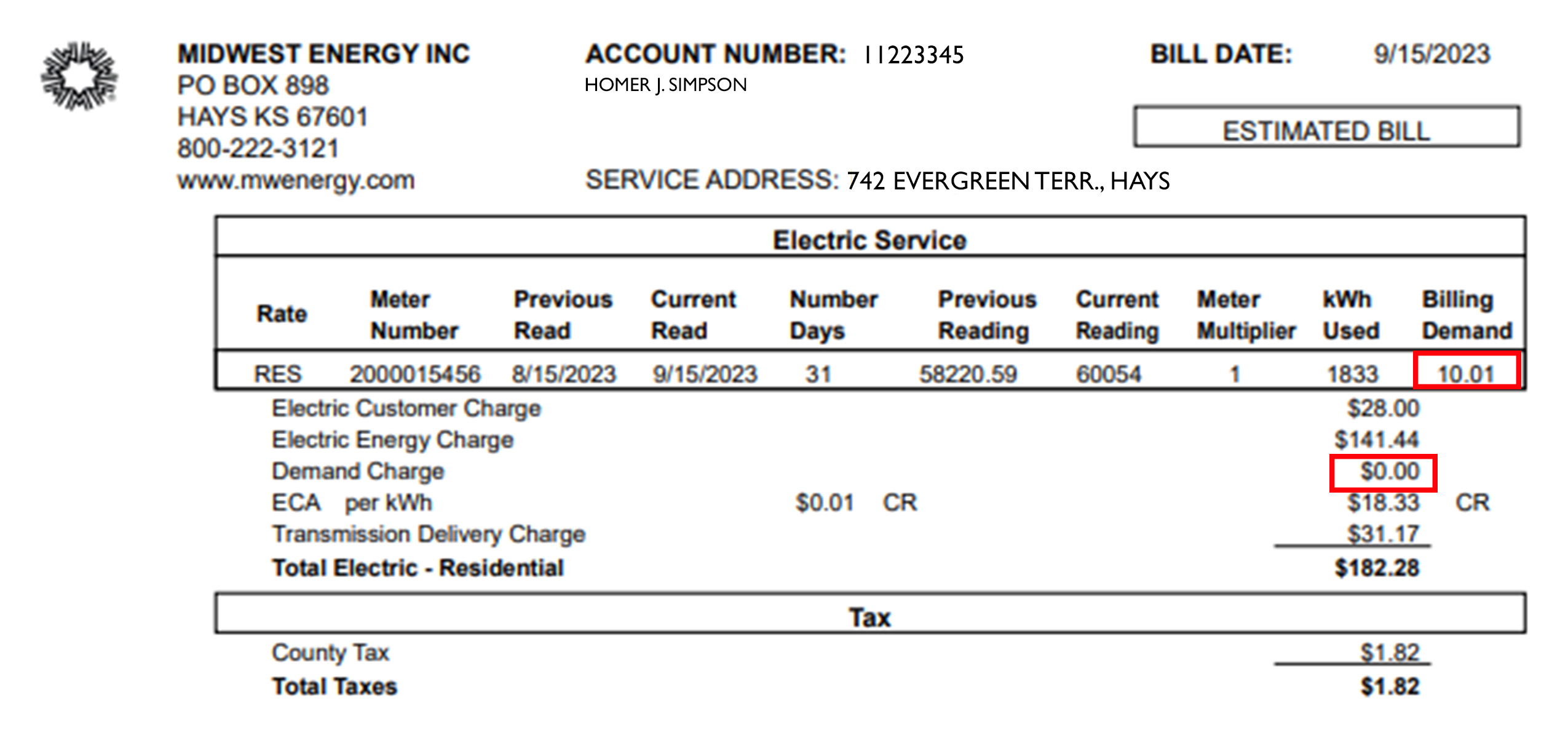Board Approves Demand Rates Effective Jan. 1, 2023
On November 17, Midwest Energy’s Board of Directors approved the adoption of a three-part rate structure for residential and small business (General Service Small) electric customers. The new rate structure continues two previous components - a monthly customer charge, and an energy charge based on the number of kilowatt hours (kWh) used, and introduces a third component, a demand charge.
Demand refers to the amount of electrical power being used at a given time. Demand is based on the intensity at which energy is used (or the “demand” one puts on the grid) in kilowatts (kW). Demand charges will be a monthly charge based on “peak demand,” or the maximum number of kilowatts a customer used in an hour, measured in 15-minute increments.
In the summer months of June 1 through September 30, demand would be billed based on peak demand between 3 p.m. to 7 p.m. The rest of the year, the billed demand would be based on whenever peak demand was reached during the month. 
The new rates go into effect Jan. 1, 2023. Customers will immediately see two new items on their January bills: “Billing Demand,” which is the peak demand set for that billing cycle, and a “Demand Charge” line. For all of 2023, there will be a $0 charge levied to allow residential customers to get a better understanding of demand charges and bill impacts (charges for small commercial would begin immediately). “The $0 charge in 2023 is part of our multi-year education plan for demand charges,” Pat Parke, CEO said. “We want customers to see their demand on bills and understand their usage habits before there are any financial impacts.”
Parke noted that as demand charges are phased in each year, energy charges decrease proportionally, dropping from 7.8¢ today to 4.2¢ per kWh by 2026, making the changes revenue-neutral for the company.
You can view your actual demand by logging into the CustomerConnect portal. To access CustomerConnect, visit www.mwenergy.com, log-in to your Midwest Energy account and click the house icon in the upper right of the screen. For more information about demand and demand rates, and tips on how to reduce your demand visit the demand rates page.
Per Kansas Statute, Midwest Energy customers may petition the Kansas Corporation Commission to review rate changes within one year of adoption. Details on petition requrements are outlined in K.S.A. 66-104d.